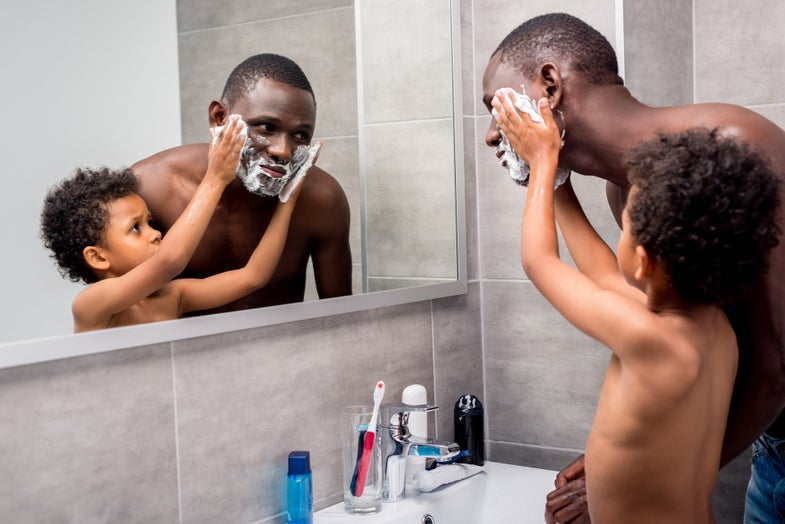How to avoid ingrown hairs
Welcome to summer, the season of red, pus-filled bumps.

In our quest to become smooth and hairless, many of us end up the opposite: Our recently shorn hairs grow into the skin, causing red bumps. Yes, we’re talking about ingrown hairs.
Pretty much anyone who shaves experiences this annoyance at some point, but people with thick or curly hair are especially prone. Black people tend to get more ingrown hairs than those of European or Asian descent, since their hair is often thicker and curlier, making the inward spiral and subsequent irritation more likely.
The problem is that you need to go against the grain to get the closest shave, but that’s also the best way to make a hair begin growing inward. When a freshly-shaved hair-tip sits too close to the skin, it becomes more likely to catch and grow in a little curlicue inside the body rather than out of it.
Once the hair starts growing inward, there’s not much you can do. The skin will become red and irritated, maybe even develop a little pustule, and eventually resolve itself. But in the meantime, you’re stuck with a gross bump on your skin.
Luckily, you can take a few steps to prevent them from happening in the first place.
Apply a topical treatment right after shaving
“After care with an astringent or topical antibiotic can help,” says Rebecca Baxt, a board-certified dermatologist with a practice in New Jersey. The goal is, essentially, to avoid the tiny infection that ingrown hairs cause by disinfecting the area.
Antibiotics will do this, but Baxt notes that they’re not always available over the counter. For recurring ingrown hair sufferers, a prescription for a mild antibiotic cream may be worth the doctor’s visit.
You can find other products right in the pharmacy aisle. Like antibiotics, rubbing alcohol or salicylic acid—the active ingredient in many acne treatments—will help prevent and reduce post-shave infections. You can also find products like Tend Skin that combine the two: It has both isopropanol (rubbing alcohol) and acetylsalicylic acid. This liquid will burn a bit on application, but should get rid of a lot of the redness, including that from basic razor burn.

Get a sharp, clean razor
Most of us leave our razors lying around in the shower for far longer than we should. They dull quickly, get caked in old hair, and generally grow bacteria. So when we shave, we’re creating ragged ends on the hairs—and if that blunt blade draws blood, on our skins as well—and shoving microbes into the area while we do it. No wonder we get ingrown hairs.
Try swapping out your razor every week or two and see if that makes a difference. The blade will be sharper, and you’ll have less of a chance to build up gunk that contributes to a dirty shave.
Don’t press so hard
It’s easier for the end of a hair to get caught if you’re pulling back the skin as you go. A sharp razor shouldn’t require you to press all that hard to cut the hairs.
Try a first pass with a light touch, then see how smooth your face or body is. If you do need to pull your skin a bit—like if you’re shaving a tricky area that you’re likely to cut—you might not have a choice. Just be wary of going too taut.
Try non-shaving hair removal methods
Unfortunately, the only way to guarantee zero ingrown hairs is to not shave at all. Instead, try another removal method.
For example, if you don’t like the look of dark hair, Baxt recommends bleaching it or trimming it short without actually shaving close to the skin. To truly remove the hair, try a dissolving cream, the most famous being Veet. These creams are designed to break down keratin, one of the main proteins in your hair, with the goal being to weaken the strand enough for it to fall out of the follicle. These are available in any drugstore, but not everyone reacts well to them. If you have sensitive skin you may not like how the chemical depilatory feels—and if you have especially thick hair, it may not work well anyway.
The best option, though also the most expensive and limited, is laser hair removal. This is a procedure where a dermatologist uses an actual laser to kill your hair follicle at the root so that it stops growing back altogether. The procedure does, however, cost a lot of money, and it only works on dark hair. The ideal candidate has very light skin and very dark hair, since the laser performs best when contrast is at a maximum. Still, there are now better lasers that work for people with darker skin. Extreme blondes, on the other hand, may be out of luck.
Accept the inevitability of ingrown hairs
Here’s the thing: Everyone who shaves will get the occasional ingrown hair. It’s just the reality of cutting hair very close to the skin. You are a human, and humans have these imperfections. It’s okay.
That said, Baxt notes that really nasty cases may require a professional. “If you get bad ingrown hairs, and the basic things aren’t working to prevent it,” she says, “best to seek medical attention, preferably with a board certified dermatologist.”